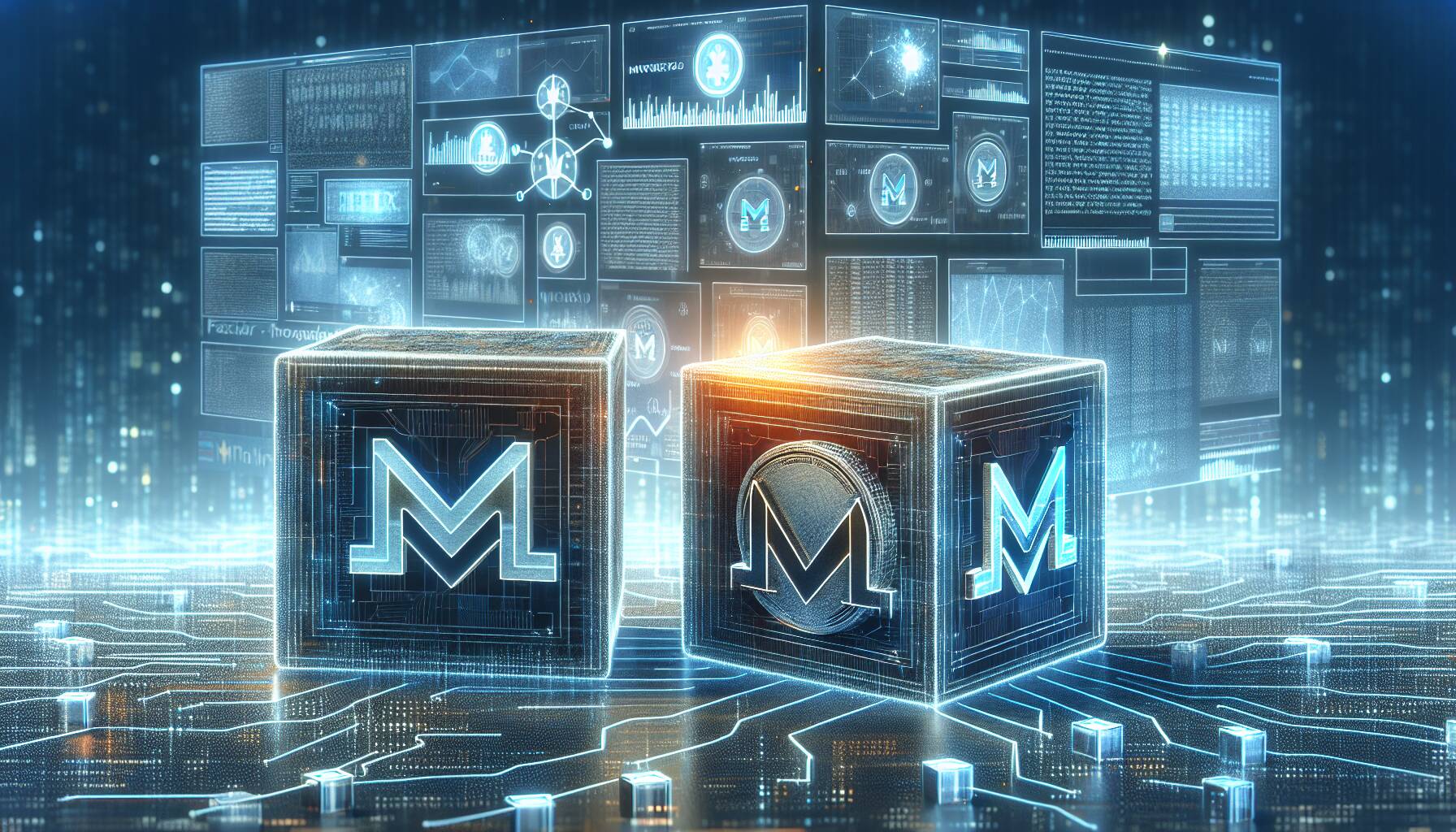In a startling turn of events within the cryptocurrency realm, Monero’s blockchain fell victim to its most significant reorganization yet, with an unprecedented rollback of 118 confirmed transactions. This reorganization, which unfolded on Sunday, was triggered by Qubic, an emerging AI-focused blockchain that has begun to assert its dominance by capturing over half of Monero’s mining power. The event not only invalidated 36 minutes of transaction history but also provoked substantial discussions regarding the stability and reliability of Monero’s network.
Beginning at block height 3,499,659, the reorganization has raised eyebrows within the crypto community as Qubic’s longer chain was accepted by Monero’s nodes, leaving previous confirmations in the dust. Interestingly, in the aftermath of this disruption, Monero’s price exhibited surprising resilience, reaching a two-month high of $333 before settling at $307.5—a remarkable feat considering the chaos surrounding it.
“Personally, I don’t consider the Monero network reliable at this point,” stated Vini Barbosa, a prominent crypto commentator, highlighting the growing concern about the integrity of Monero’s blockchain.
This incident has not gone unnoticed, as statistics reveal that a staggering 29.5% of all blocks produced in the last 24 hours were orphaned. The community is now at a crossroads, facing tough decisions on how to fortify the network against such disruptions in the future. One controversial proposal includes implementing DNS checkpoints to create trusted snapshots of the blockchain, though critics warn that this would jeopardize decentralization—a core principle of cryptocurrencies.
Amidst these challenges, the crypto market continues to watch closely as solutions are debated and the implications of this event unfold. With increasing trading volumes and price fluctuations, the trajectory of Monero may influence broader market dynamics in unexpected ways.

Monero Blockchain Reorganization and Its Impacts
Key points regarding the recent significant event in the Monero blockchain:
- 18-block Reorganization: Monero’s blockchain experienced its deepest reorganization, rolling back 36 minutes of transaction history.
- Invalidation of Transactions: 118 confirmed transactions were rendered invalid due to the reorganization.
- Intervention by Qubic: The reorganization was initiated by the lesser-known AI-focused blockchain, Qubic, which has gained more than half of Monero’s mining power.
- Use of uPoW Model: Qubic utilizes a “useful proof-of-work” model, converting Monero mining rewards into USDT for QUBIC token buybacks.
- Market Reaction: Despite the rollback, XMR’s price rose to a two-month high of $333 before dropping to $307.5, indicating resilience in the market.
- Increased Trading Volume: Daily trading volume surged by 78% to $136 million, reflecting heightened market interest.
- Community Concerns: Crypto commentator Vini Barbosa expressed doubts about the reliability of the Monero network and suggested halting XMR payments until the issue is resolved.
- Block Orphaning Statistics: In the last 24 hours, 29.5% of the blocks (213 out of 720) have been orphaned, raising concerns about network stability.
- Proposed Solutions: Potential implementation of DNS checkpoints to prevent future reorganizations, though critics warn this could threaten decentralization.
- Developer Discussions: Ongoing discussions on GitHub regarding the deployment of DNS checkpoints and other solutions to enhance network security.
Monero Faces Unprecedented Reorganization: Implications for the Crypto Community
The recent 18-block reorganization of Monero’s blockchain represents a significant event in the cryptocurrency landscape, highlighting both the vulnerabilities and resilience of the network. While Monero has long been lauded for its privacy features and robust decentralization, this particular incident has raised serious questions about its reliability moving forward. Qubic’s aggressive strategy, acquiring a majority of Monero’s mining power, indicates a shift in the competitive dynamics of the space, particularly with its unique use of a “useful proof-of-work” model.
Competitive Advantages: For Qubic, the reorganization reflects a strategic advantage, showcasing its ability to leverage its computing power to influence established networks. This move not only elevates Qubic’s profile as a contender in the blockchain arena but also demonstrates a tactical execution of its protocol to gain the upper hand in the market. Furthermore, the conversion of mining rewards into USDT and subsequent buybacks of QUBIC tokens could bolster its ecosystem and attract investors looking for innovative financial models.
Disadvantages: However, the impending instability for Monero poses a dilemma for the broader cryptocurrency community. Such events can trigger a loss of confidence among users and investors, as demonstrated by commentator Vini Barbosa’s critique. If users deter from accepting XMR payments amid reliability concerns, it could lead to diminished market participation, potentially stifling Monero’s growth and adoption.
This situation is particularly critical for miners, developers, and investors. Miners could face reduced profitability as network confidence wanes; developers might need to consider complex solutions to salvage the project’s integrity; and investors could find themselves divided, weighing the risk of holding XMR against emerging alternatives that promise more stability. If DNS checkpoints are adopted, while providing a possible short-term fix, they may also ignite debates over the core principles of decentralization that many cryptocurrencies were built upon.
As the dust settles from this significant event, stakeholders across the spectrum will need to closely monitor the developments, as Qubic’s advances could either be a catalyst for innovative solutions or a setback that haunts Monero for the foreseeable future.

















